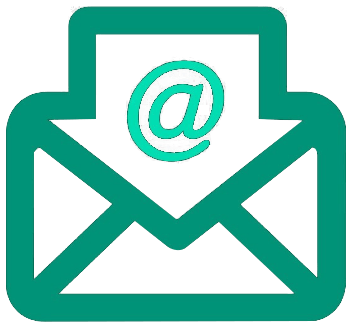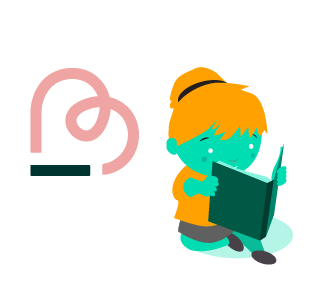Every business venture comes with risk.
And it’s true that you’ll never be able to fully eliminate all risks.
But taking the time to truly understand the market you’re entering into will help you ensure all your business and marketing efforts are tailored in a way that eliminates wasted expenditure and gives your brand a better chance of survival.
Do you know who you are talking to?
You will have invested a lot of time, money, and resources into establishing your brand. You’ll want to roll out your marketing campaigns as soon as possible.
But before you begin to think about your marketing efforts, you first need to establish your target audience – that is, who it is you’re seeking to engage with your business.
Who is your ideal customer and what makes them tick?
Establishing your target audience is a critical step to ensure the correct tone and messaging is being used in your campaigns. As such, it is best to tailor content to them.
But how can you know your customer if you’ve never met them?
Well, we’ve put together a short guide on understanding your target audience. And it includes 8 quick-fire questions that will allow you to start brainstorming yours today.
First, we’ll delve a little more into what a target audience is.
What is a Target Audience?
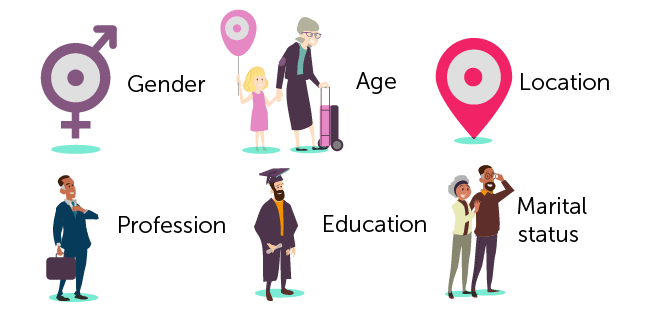
The term ‘target audience’ refers to a group of people defined by certain demographics, features, and behaviour. These demographics usually include some key features such as:
- Gender
- Age
- Location
- Profession
- Education level
- Marital status
Often, companies use these insights about their target audience to guide decisions on marketing campaigns.
As inbound marketing campaigns have surged in popularity over the past few years with the advances of technology. As well as an increase in mobile and social media users. A lot of research has gone into the benefits of using inbound marketing techniques that are personalised to a specific demographic of individuals.
Initial surveys suggest that marketers see up to a 20% increase in sales when using personalised content. As such, this is recognition that messaging that resonates with a brand’s audience is becoming widespread. And more brands now understand the monetary benefits that can come from it.
But, in order for customers to connect with a brand or a particular product or service, they need to relate to it. Not only the content, but the tone of the marketing messages they receive.
Therefore, you need to take a lot of time and care to research to learn exactly who your target audience is.
If you know which audience you target with each campaign. Then it will ensure you speak their language and optimise your campaigns in the most effective way possible.
Most importantly, to know your audience means that you also know who your audience is not. And this means you won’t waste effort on people who are not ideal for your brand.
In other words: Speak to less, but communicate with more.
8 Quick Questions to Help Define Your Target Audience
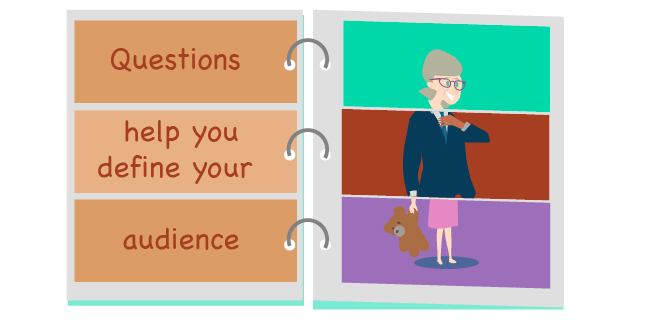
Unfortunately, there’s no one-size-fits all audience for companies and you will need to do the research yourself to find out who yours is.
However, with a short and simple brainstorm exercise, you can quickly understand who your target audience is. As well as how you can best reach them using your digital marketing strategy.
So, grab a pen and paper. And use these eight quick-fire questions to jot down ideas about who your target audience may be.
1. What is their age?
One of the most defining and important features to establish about your target audience is their age group.
To understand the age of your audience is critical to your marketing strategy. You wouldn’t target high-end luxury cars at young teenagers. Just like you probably wouldn’t advertise the latest Kylie Jenner makeup range to a group aged over 60.
Having an idea of the age range of your current and potential customers will help you forecast more accurately. Especially if you need to determine which demographic will be most relevant to your industry. As a result, this will help guide later decisions on what content would work best when advertising to them.
2. Where do they live?
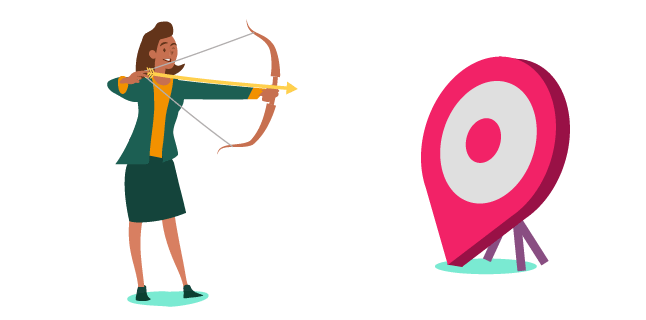
Whether you market your brand online or offline, the need to understand the location of your prospective customers is important. Especially to know exactly where to target your advertisements.
Today, digital advertising platforms like Facebook Ads Manager and Google Ads are impressively advanced. In fact, they can segment your audience by location and target specific messaging to them.
This can be extremely helpful if you are a small to medium-sized business with a local presence in a specific city or county. Because you can target your adverts and website’s SEO to the physical area in which you operate.
However, even if you are an international firm that’s keen to target and acquire customers from all over the globe. Then you can use location-specific marketing to target those in the highest-converting regions. Thereby increasing your overall conversions. Over time and as your business grows, you can expand your reach further and expand your business growth into more locations.
3. What is their gender?
On top of knowing your customers’ age and geographic location, it’s also essential to your branding and marketing efforts that you know who the predominant gender is that engages with your brand. Do they self identify mainly as men or women?
It’s important to note that this could also change throughout the year. For example, if you are a women’s perfumery. Then it would make sense to target your marketing to women for most of the year.
However, in the run-up to Christmas or Valentine’s Day, you will probably notice better conversions if you target both the male and female market. As more people will be buying gifts for loved ones.
For instance, if you have a predominantly gendered product or service. Then it makes sense to segment your audience by gender in this way. Overall, it will decrease a waste of expenditure in your advertising efforts. Therefore, it will allow you to reinvest that money into other marketing channels.
Of course, it’s not always as clear cut as this. For example, if your brand caters to all genders fairly evenly. Then it’s unlikely you’ll be able to use gender-specific advertising in this way.
4. What communities do they engage with?
Now you have an idea of who your target audience is, it’s important to discover what their wider interests are.
For example, let’s say you are a male sportswear brand based in the UK. You know that the bulk of your advertising is going to be targeting individuals that have an interest in sport. But where else could your audience be hiding?
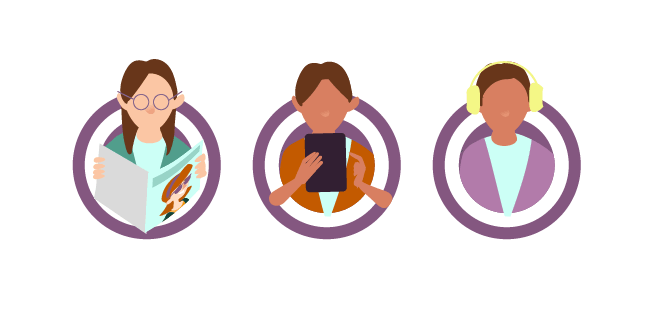
Maybe they’re interested in healthy eating or muscle-growth supplements? Or certain genres of music? Perhaps they love to travel too? Or are they part of the LGBTQ+ community and regularly engage with topics in this area? Maybe they have particular charities, causes or political interests that drive their decisions?
Don’t be afraid to engage with your audience to find out these answers. If you own a physical store, speak to customers who visit to find out more about them. Or, if you have a significant social media following. Then you can run polls on Twitter or Instagram Stories to learn more about them.
The more insights you gain about your target audience, the more tailored your messaging will be to their specific interests. And the more aligned with your brand and messaging they are. Then, the more likely they are to convert into customers who remain loyal to your brand over the years.
Conversely, don’t be afraid to show them who you are as a brand too. And never be dishonest. If your brand message is honest, people are much more likely to build loyalty with a brand they trust.
5. What are their shopping habits?
Once you have a firm grasp on who your target personas are, you need to understand their behaviour. Especially when it comes to their shopping habits.
Do they need to see any item multiple times before making a purchase? Do they watch reviews on YouTube or other video sites? Where during these stages of the buyer’s journey could you target them with jovial content that will help push them through the conversion funnel?
It’s highly likely that your audiences’ shopping habits may differ and depend on the price of a product or service. For example, those looking for cheap products are far more likely to convert quicker than those making larger purchases. Which could take weeks or even months for them to save up and make the decision to purchase.
If this is the case, then you will need to think about how to subtly target those audience members. Through regular and engaging messaging online, such as on their social media or via email marketing. In these circumstances, one advert running throughout the period plus irregular social media engagements could be all you need to secure a sale that may otherwise have been missed.
6. Where do they consume content?
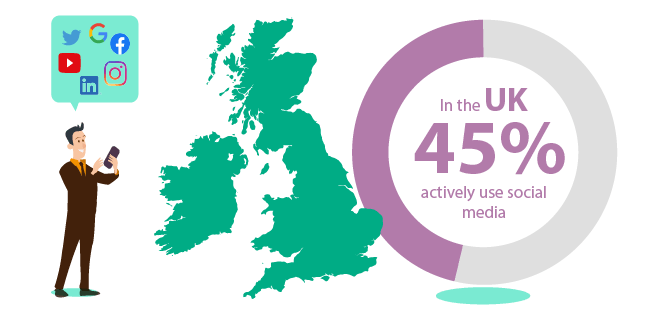
In the UK, just under half of the population (45%) actively use social media. That’s over 30 million people who actively interact with friends over Facebook messenger. Or scroll through news stories on Twitter, and learn new information on YouTube.
In order for your next advertising campaign to take advantage of these prime real estate locations. Then you need to know where your audience consumes their content and when.
For example, Twitter users tend to be most active first thing in the morning in the working week, while LinkedIn users are on the platform mostly at weekday lunchtimes and then immediately after the working day during their commute back home.
In fact, it’s relatively easy to work out which social media platforms are most popular among your target demographic. And you probably already have a good idea of where they may be most active anyway.
But, by knowing where your audience is spending their free time makes it a lot easier to target your messages. And, to make them as high converting as possible. This will eliminate the need to spend extra budget on platforms that aren’t popular with your target demographic. As well as maximise your profit potential at key times. For instance, by posting just as they are about to open up their apps.
7. What content works best?
Once you establish where your target audience spends their time online. Then, you need to work out what kind of content will have the strongest impact.
However, there are so many types of content available for brands to choose from. As such, the one which best connects with your audience may take a little trial and error to find. After all, you can’t know for sure whether your audience will like your content until it’s out there.
However, if you want help to generate content ideas, look to the experts. For example, social media marketing experts predict the following content types will continue to be most successful in 2021 [updated December 2020]:
- Ephemeral content (also known as time sensitive content) – such as Instagram and Snapchat stories
- Social commerce through apps, like Instagram, Pinterest and Facebook – allows audiences to shop with brands without having to leave the app
- Video content will remain one of the most engaging content forms on short-form apps like TikTok and Instagram Reels, as well as long-form content on YouTube on Facebook
- Live streaming – Allows time sensitive content to be accessed by individuals all over the globe
Brainstorm some ideas to see how these popular content forms can be used as part of your overall content marketing strategy.
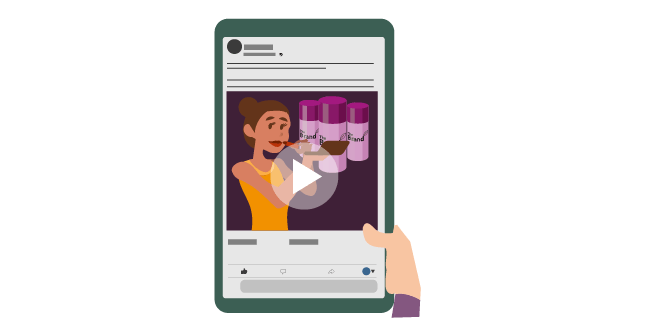
For example, if you were an eCommerce beauty store. Then you could run an Instagram or Facebook live event. Or alternatively, you could livestream one of your employees as they test out the products on themselves.
Could you download this livestream and upload it to YouTube? That way, your other audience members could watch it at a later date. Or could you take the same event topic and turn it into a blog post? Perhaps even where your employees review the products in written format? And could this blog post be emailed out as part of your monthly newsletter?
You can see how one topic or content form can inspire and align your messaging across a whole other range of marketing channels. And this allows you to run consistent messaging to as many of your target audience as possible.
Spend just a few moments thinking about the behavioural habits of your future customers. As a result, you can begin to collate a digital marketing strategy that targets them in the most optimal way possible.
8. Who is your competitors’ target market?
At the latter stage of your brainstorm, it’s a good idea to take a look at how your target demographic stacks up against your competitors.
For entrepreneurs and small business owners that don’t have much experience in the market, look to others. Take some tips from the competition. In fact, this can be a crucial stepping stone to help you create a cohesive marketing strategy.
By looking at the messaging from some of the most successful companies in your industry, you can learn a lot. Not only about who your target audience should be. But also what kind of marketing messages work well for them.
This can be particularly helpful if they have a long and established social media platform. So you can assess and track any patterns, as well as look for any content gaps in them.
Of course, for more insight you can always conduct a competitor analysis to see what the overall landscape looks like.
Building On Your Initial Audience Demographics
Over time, these initial brainstorm ideas will shape your future advertising strategy. As you begin to form living and breathing personas with which you want to imagine you are selling to.
Although these initial eight questions will allow you to form a general understanding of who your audience are – including their age, gender, and geographical location, you will want to continue to build on your audiences’ characteristics as you shape your content strategy to target them accordingly.
This means working out any additional personality traits. Such as their spending habits, whether they react best to jovial or serious content, and what types of things they like to do in their spare time. In fact, all of these can help you to create a handful of really well-defined target audience members. And, you will know exactly what types of content should resonate with them.
Understanding your customers’ emotional triggers are a crucial part of your forecasting and to know exactly how they will engage with your brand.
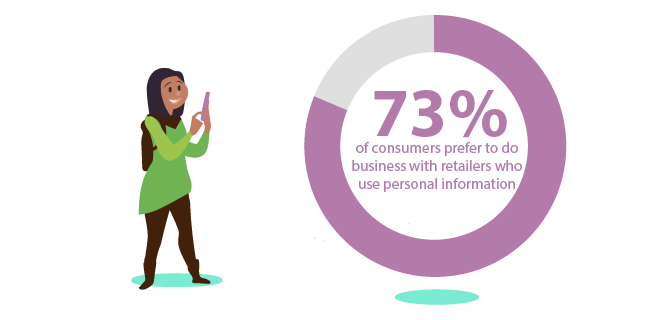
According to recent research, 73% of consumers say they prefer to do business with retailers who use personal information to make their shopping experience more relevant, while 40% of those say personal relevance is the single biggest factor in determining whether they engage with content.
Ignoring your customers’ individual traits can cost you dramatically, so it’s important to make sure you take the time at the start to really understand who your audience is.
Creating Your Personas
Once you’ve created a list of features about your target audience, you need to create personas in them. Because this will help you to see them as living, breathing humans.
For example, no one is ever referred to as “Target 1: Female, 25-30, Everyday makeup user.” Or “Target 3: Male, 25-35, Avid football fan.”
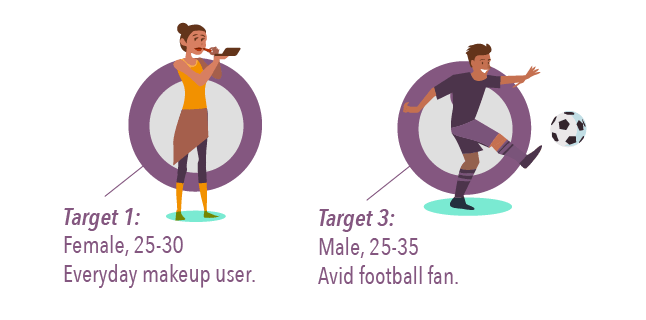
And your customers, just like you, are people – not a statistic.
It’s very easy when you brainstorm your target audience to see them as numbers or a set of characteristics. But to really understand the consequence of your work and to create the best possible content, you will do far better if you have a real figure in mind.
For example; “Erica would love to see a smokey eye tutorial for Christmas party season” and “Thomas will want to know when he can pre-order Arsenal’s newest football shirt”. These examples make it far easier to bring your marketing campaigns to life. And, as such, you can logically predict how your target audience may react to them.
After all, your customers, clients and employees are people. In fact, the entire endeavour of marketing is all about people. So it is imperative you understand your audience personas.
To collate all your audience demographics and from that, create a set of buyer personas is a relatively easy process. Especially with lots of free templates available online to help you place all their traits and tropes in one place.
However, don’t forget to try and make this stage of the process as collaborative as possible across your sales and marketing team. Different team members may have different insights about different types of audience members. As such, you want to include as many of them as possible in your personas to get the most accurate depiction possible.
Summary
When it comes to your brand’s marketing, you need to have a clear direction. Specifically, on where to launch it and who to. It’s no good to simply set a train off on its tracks if it never has a destination in mind. And you need to know exactly who needs to receive your message and be able to predict the expected impact.
In this respect, a clear understanding of your target audience is essential. From who they are, what channels they use, to what their spending habits are like. In fact, it is crucial to effectively align your marketing strategy. And to send a strong and consistent message to those who it will impact the most.
To define your target market is very easy to do, as we’ve established with the eight questions above. In fact, there’s even free templates that can help you aggregate all your ideas. As well as create real human personas from them.
But the most important thing is that you conduct this stage of your marketing before anything else. As a new business on the market, you don’t have time or resources to waste your marketing efforts. Especially on those people that it won’t impact.
However, with the right preparation ahead of your launch, you can kick-start your strategy in the right direction. And as a result you can optimise your sales from the word ‘go.’
Developing a Marketing Strategy with a Marketing Consultancy
For new and small businesses, knowing how and what to include within a marketing strategy can be a challenge. Particularly if you don’t have a dedicated and experienced marketing team in-house.
Often, before they launch themselves online, many of these business owners will turn to a marketing consultancy. One that can help develop a comprehensive marketing strategy to expand audience growth. And to optimise their initial campaigns to deliver the highest return on investment possible.
Through in-depth competitor analysis, cohesive website analysis, and other digital marketing services, we can ensure you launch your business with all the tools you need for long-term growth and ultimately, success.
To hear more about the services we offer or to find out about our previous experience, why not get in contact. It’d be great to learn more about your business. And we’d love to hear about the type of work you may need assistance with.

